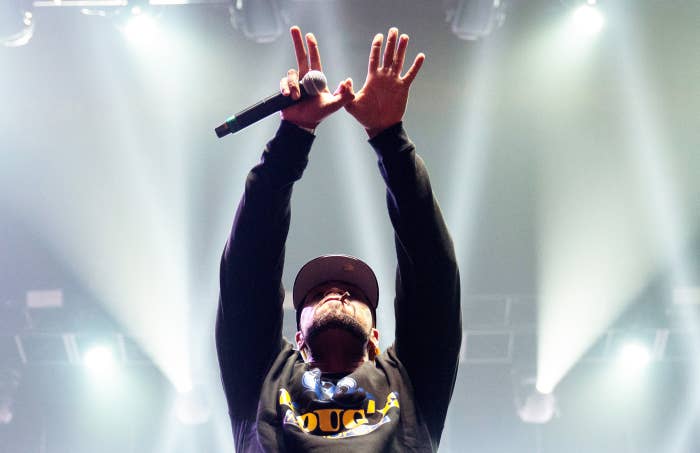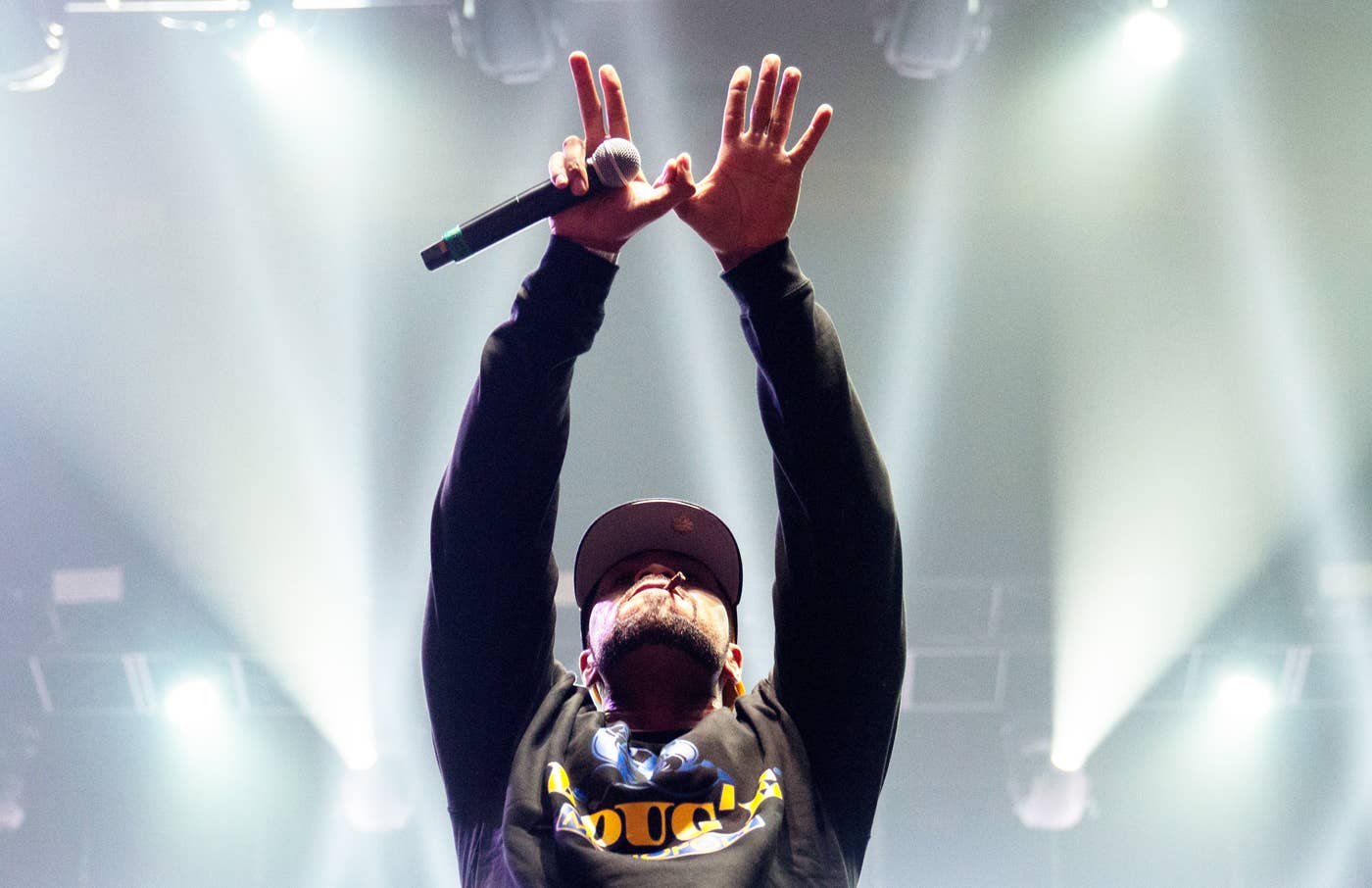
This weekend, the Wu-Tang Clan continued its rolling 25th anniversary celebration of the group’s debut album, Enter the Wu-Tang (36 Chambers). At this point, the celebration has come unbound from time (the actual anniversary of the record’s release was back in November). But that hasn’t stopped a slew of celebratory content, including merch bundles, a documentary, and performances on morning and late-night television shows.
The latest entry on the anniversary calendar occurred this Saturday and Sunday, when the Clan headlined New York City’s Terminal 5 for two nights and performed 36 Chambers in its entirety. (I attended the second of the two shows). All of the surviving group members were there, and the late Ol’ Dirty Bastard’s parts were performed by his son, Young Dirty Bastard.
The show was less notable for what it was—a run-through of the album, followed by a handful of group songs, solo cuts, and guest appearances from Wu family (Cappadonna, Redman, Streetlife, and a short blessing from Popa Wu)—than what it represented. The night was a living embodiment of what makes the Wu-Tang Clan unique from other musical acts.
25 years on, people of all generations are still enraptured by the wu-tang vision, and ready to enter into it again and again.
Two and a half decades ago, a group of young men from Staten Island took their obsessions, loves, beliefs, childhood memories, life experiences, and wisdom, and fastened it all into a self-contained universe that connected with people from all over the world. Shaw Brothers kung fu movies; Five Percenter terminology; 1970s soul music; old cartoons; The Warriors; blaxploitation films; the rough-and-tumble ‘80s NYC of Bernhard Goetz, corrupt cops, and crack rocks. Nine guys from Staten Island (or, as they refashioned it, Shaolin) mashed up all of that and paired it with wild, unquantized beats.
Plenty of rap groups in the early ‘90s had a signature style or aesthetic. But few before Wu-Tang had built an entire world—one with its own geography, its own mythos, its own larger-than-life characters, and its own sound.
The same adjectives come up over and over again when discussing RZA’s production: “simplicity,” “economy,” “grimy,” “lo-fi,” and the altogether-too-vague “dusty.” But none of it quite does the music justice. Some things were technically wrong with the beats: The timing of drum hits, created by hand as opposed to machine, was slightly off in places. The sounds were bizarre and distant, like they’d been recorded in an elevator shaft, sometimes because they were. The song structures were all over the place, and concessions for the sake of airplay were non-existent (with the exception of their ever-creative martial arts sounds used to cover up curses). Lyrically, each member contributed something different: Ghost’s heart-on-the-sleeve emotion and one-of-a-kind descriptions; Raekwon’s drug tales and inventive slang; Meth’s off-the-charts charisma; GZA’s scientific darts; ODB’s unpredictability. But there was an internal coherence and confidence to the vision: a sense that everything belonged together and that it was up to you as a listener to figure it all out.
RZA’s five-year plan brought that vision to the world, and it touched something deep enough that decades later, a packed-to-the-rafters room of people showed up on a cold Sunday night to see the group bring an album to life that served as its public genesis.
During the show, the current members of the group were supplemented by a screen that showed video footage of their younger selves. Seeing the young Wu rhymers on film in black and white, while the IRL versions were performing in living color (word to Calhoun Tubbs) gave a sense of just how far the group has come since the “Protect Ya Neck” days. A look around the enraptured crowd, many of whom didn’t look like they were even born when 36 Chambers dropped, made it clear that “Wu-Tang forever” isn’t just a catchy album title.
The last time I saw the Wu as a unit was a little over a decade ago, at the 2007 Rock the Bells festival. At one point, the entire 80,000 person crowd threw up their W’s simultaneously. That feeling of the group’s influence stretching as far as the eye could see came back to me on Sunday. The Wu-Tang Clan has provided an entire universe to fall into. That, in the end, was my biggest takeaway from Sunday’s show: 25 years on, people of all generations are still enraptured by that vision, and ready to enter into it again and again.

